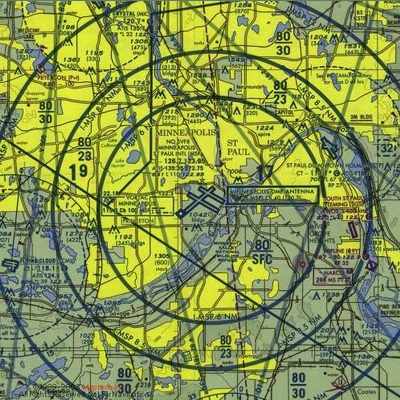Sun, Nov 01, 2009
Record Rainfall Did Not Slow Down Runway Reconstruction
 North Parallel Runway 12L/30R at
Minneapolis-St. Paul International Airport (MSP) reopened Thursday
evening, marking completion of a 20-year effort to replace aging
runway pavements at the facility.
North Parallel Runway 12L/30R at
Minneapolis-St. Paul International Airport (MSP) reopened Thursday
evening, marking completion of a 20-year effort to replace aging
runway pavements at the facility.
Construction began August 18 on the $17.5 million project to
reconstruct the 3,800' center section of pavement, which dated back
to 1967. Since that time, air traffic has been redirected onto the
airport's three remaining runways, resulting in altered flight
patterns and noise distribution around the airport.
Once the FAA flight check of the runway's instrument landing
system is complete next week, runway use and the resulting flight
patterns around MSP will return to pre-construction conditions.
"Despite the challenges presented by near-record rainfall in
October, the runway is reopening according to schedule," said Jeff
Hamiel, Executive Director of the Metropolitan Airports Commission,
which owns and operates MSP and six general aviation airports.
"This was the last significant project in the $3.1 billion MSP 2010
expansion program. With the completion of that program, all
pre-existing runway pavement has been replaced and a new 8,000-foot
runway developed, providing ample airfield capacity for decades to
come."
The unusually cloudy, wet weather this month also contributed to
numerous flight delays and cancellations. With Runway 12L/30R out
of service, air traffic controllers had limited options for
directing air traffic in periods of low visibility, when aircraft
must be spaced further apart. Today's runway reopening gives air
traffic controllers' more options, reducing the severity of
potential delays. Once the FAA flight check is complete and Runway
12L/30R's instrument landing system is fully operational next week,
low ceilings (cloud cover) will have far less impact on flight
schedules and operational patterns.

Residents living under the approach and departure flight paths
for Runway 17/35 in Minneapolis and Runway 4/22 in St. Paul should
notice a reduction in aircraft overhead. Eagan residents might also
notice fewer aircraft taking off to the southeast from Runway
12R/30L. Residents of south Minneapolis who experienced a reduction
in aircraft overhead in recent weeks will notice a return to
pre-construction levels with flight patterns based on wind
direction and weather conditions.
More News
Its Offerings Are Lighter, Cleaner, and Now Pushing Past 1,000nm on SAF Jet Fuel DeltaHawk’s diesel-powered aircraft lineup has seen incredible upgrades over the last few yea>[...]
The Airplane Experienced A Total Loss Of Engine Power On December 3, 2025, about 1600 central standard time, a Mooney Aircraft Corp. M20K, N57229, was substantially damaged when it>[...]
Make Sure You NEVER Miss A New Story From Aero-News Network Do you ever feel like you never see posts from a certain person or page on Facebook or Instagram? Here’s how you c>[...]
Aero Linx: European Society of Aerospace Medicine (ESAM) As a pan-European, independent forum, it works to promote the safety and health of all persons involved in aviation and spa>[...]
“We are excited to see Wisk achieve this milestone, and I’m so proud of the team that made it possible. The team at Wisk has built advanced technologies across flight c>[...]
 Aero-TV: DeltaHawks Diesel Power Steps Into the Spotlight
Aero-TV: DeltaHawks Diesel Power Steps Into the Spotlight NTSB Prelim: Mooney Aircraft Corp. M20K
NTSB Prelim: Mooney Aircraft Corp. M20K ANN FAQ: Turn On Post Notifications
ANN FAQ: Turn On Post Notifications ANN's Daily Aero-Linx (12.20.25)
ANN's Daily Aero-Linx (12.20.25) Aero-News: Quote of the Day (12.20.25)
Aero-News: Quote of the Day (12.20.25)




